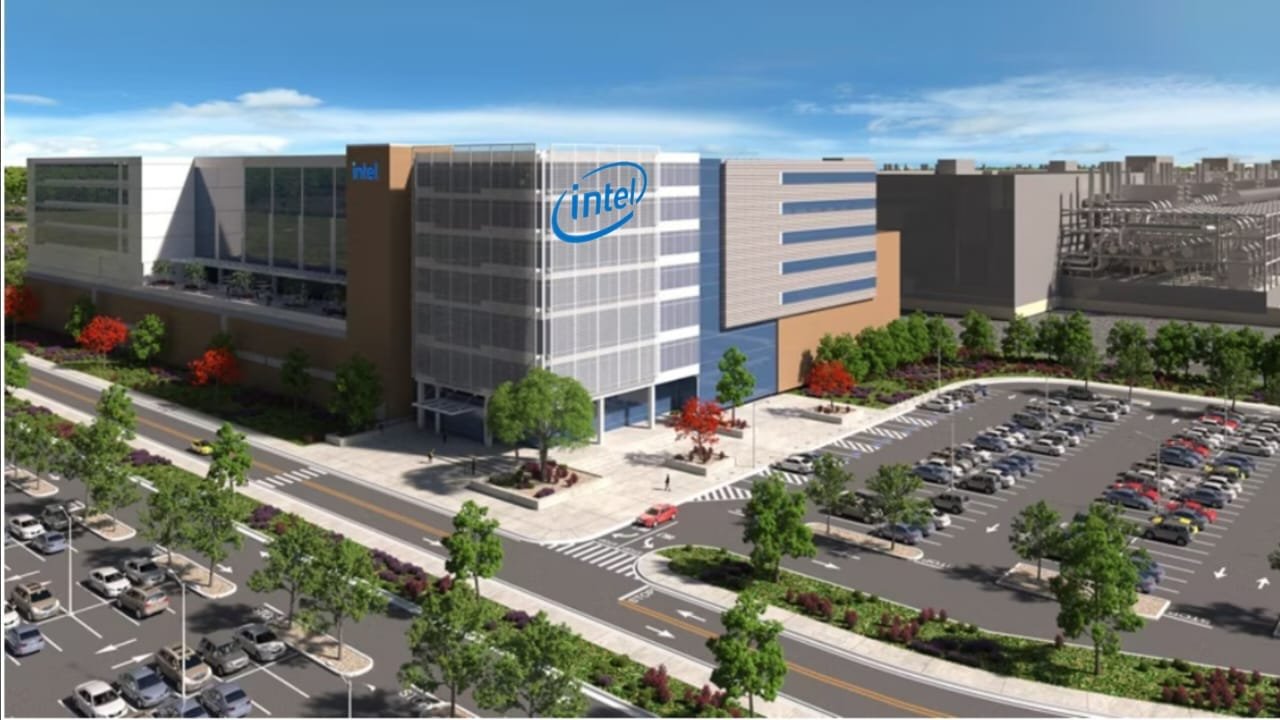
Intel’s massive Ohio “Silicon Heartland” chip factory under construction — now delayed until 2030.
Intel Ohio chip $28 billion factory delayed: In-depth analysis
Intel has announced the postponement of its $28 billion chip manufacturing project until 2030.The project was being built in Ohio, USA and was named “Silicon Heartland”. The factory was designed to make the world’s most advanced semiconductor chips, but now its completion will be delayed by about five years. In this article, we will analyze in detail the reasons, effects and future plans of Intel for the delay in this project.
Talking about Intel’s Ohio chip factory
Intel had planned to build a huge chip factory in Ohio in 2022 to boost semiconductor manufacturing in the US. The project was created to revive semiconductor production in the US and reduce dependence on countries like China and Taiwan. Two large chip manufacturing plants (fabs) were to be built in this project. Later, there was a plan to increase this number to eight. But now the deadline for this project has been extended to 2030.
Talking about the main reason for the delay in the project,
Intel has given several reasons behind the delay in the construction of its chip factory. Capital expenditure and financial strategy Intel has recently taken several major decisions to balance its capital expenditure. The company had to take this step to reduce its costs and maintain stability in the market. In 2023, Intel laid off more than 15,000 employees, making it clear that the company has become cautious about expenses.Uncertainty remains in the semiconductor market globally. Chip demand had increased during the COVID-19 pandemic, but now it has slowed down. Fluctuations in chip demand in the electronics and automobile sectors forced Intel to reconsider its plans.
Cut in US government subsidies
Intel was expected to get subsidies from the US government under the CHIPS and Science Act. However, the government reduced the subsidy to Intel from $8.5 billion to $7.86 billion. This cut also became a major reason for the delay in this project. Technical and logistical problems related to construction Setting up a chip manufacturing plant requires many state-of-the-art machines and technologies. Technical difficulties and logistical problems in construction also delayed this project.
Impact on US semiconductor industry on Intel Ohio chip factory
This delay has dealt a blow to the plan to boost semiconductor production in the US. This project was important to make America self-sufficient in chip manufacturing. This factory was expected to create thousands of jobs, but the delay will harm the local people. It will also have a negative impact on small businesses and supply chain companies in Ohio. The delay in this Intel project will also affect global chip supply. The US and Europe are trying to increase their semiconductor production, but this delay may benefit China and Taiwan. Talking about Intel’s future strategy, Slowing down the project Intel has said that it is not completely shutting down the project, but is moving it forward at a slow pace. It is planned to complete it by 2030, but it will depend on the market situation.
invest in the US and Europe and Artificial Intelligence
Intel will continue to invest to strengthen its semiconductor manufacturing in the US and Europe. The company has also announced the construction of a new chip factory in Germany. Focusing on Artificial Intelligence (AI) and High-Performance Computing Intel is now focusing more on making advanced chips for AI and High-Performance Computing (HPC). The company plans to announce several new chip technologies in 2024.
Conclusion: The Road Ahead for Intel’s Ohio Chip Factory
The delay of Intel’s $28 billion Ohio chip factory is a major setback for the US semiconductor industry. However, the company has not completely canceled the project, but has postponed it till 2030. There are many reasons behind this delay, including financial strategy, market uncertainty, reduction in government subsidies and technical challenges. This decision will have an impact on the US economy, local industry and global chip supply chain. In the future, Intel will have to adopt a strong strategy to successfully complete this project. Also, America will have to make more efforts to make its semiconductor industry self-reliant.




